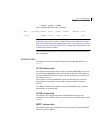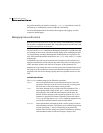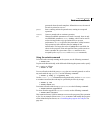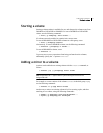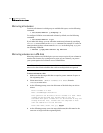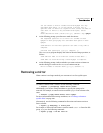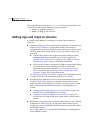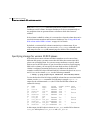
269Administering volumes
Monitoring and controlling tasks
generated when the task completes. When this occurs, the state of
the task is printed as EXITED.
pause Puts a running task in the paused state, causing it to suspend
operation.
resume Causes a paused task to continue operation.
set Changes modifiable parameters of a task. Currently, there is only
one modifiable parameter, slow[=iodelay
], which can be used to
reduce the impact that copy operations have on system
performance. If
slow is specified, this introduces a delay between
such operations with a default value for iodelay of 250
milliseconds. The larger the value of iodelay that is specified, the
slower is the progress of the task and the fewer system resources
that it consumes in a given time. (The
slow attribute is also
accepted by the vxplex, vxvol and vxrecover commands.)
Using the vxtask command
To list all tasks currently running on the system, use the following command:
# vxtask list
To print tasks hierarchically, with child tasks following the parent tasks, specify
the -h option, as follows:
# vxtask -h list
To trace all tasks in the disk group, foodg, that are currently paused, as well as
any tasks with the tag sysstart, use the following command:
# vxtask -g foodg -p -i sysstart list
Use the vxtask -p list command lists all paused tasks, and use vxtask resume
to continue execution (the task may be specified by its ID or by its tag):
# vxtask -p list
# vxtask resume 167
To monitor all tasks with the tag myoperation, use the following command:
# vxtask monitor myoperation
To cause all tasks tagged with recovall to exit, use the following command:
# vxtask abort recovall
This command causes VxVM to attempt to reverse the progress of the operation
so far. For an example of how to use
vxtask to monitor and modify the progress
of the Online Relayout feature, see “Controlling the progress of a relayout” on
page 299.







